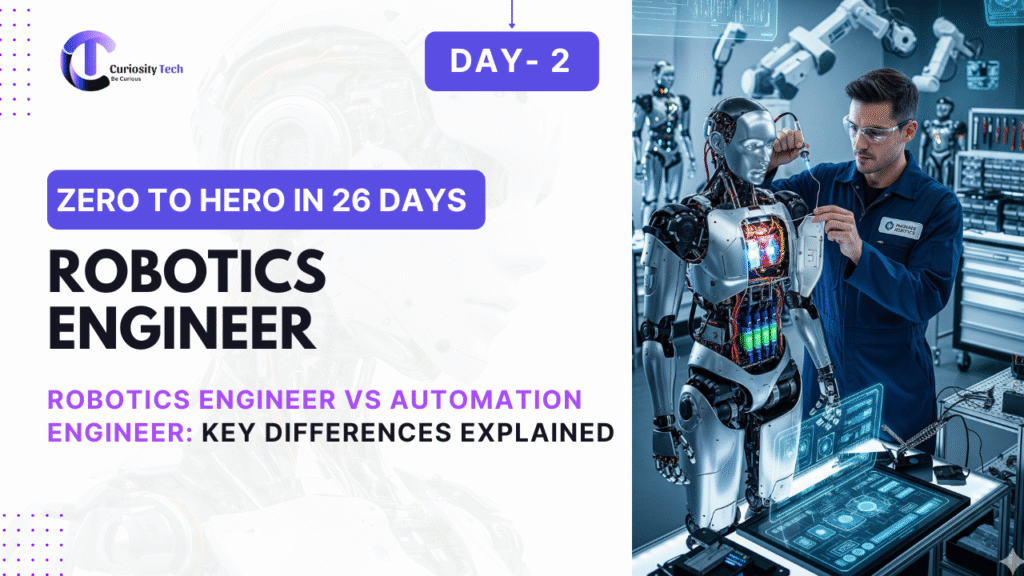Introduction
As deep learning and AI become ubiquitous, ethical considerations and responsible practices are critical. AI systems have the potential to impact society, privacy, and decision-making, so engineers must ensure that AI solutions are fair, transparent, and safe.
At curiositytech.in, learners not only build AI systems but also explore ethical challenges, case studies, and regulatory guidelines, preparing them to become responsible AI engineers in 2025 and beyond.
1. What is AI Ethics?
AI ethics refers to the moral principles and professional standards guiding the design, development, and deployment of AI systems.
Core Principles:
- Fairness: AI should not discriminate based on race, gender, or other protected characteristics
- Transparency: Decisions made by AI should be explainable and understandable
- Privacy: AI must safeguard sensitive user data
- Accountability: Developers and organizations should be responsible for AI outcomes
- Safety: AI should avoid harmful behaviors, including bias or unsafe actions
Human Analogy: Just as doctors follow ethical codes to protect patients, AI engineers must ensure their models do not harm users or society.
2. Common Ethical Challenges in AI
| Challenge | Description | Example |
| Bias | AI models may inherit societal biases | Facial recognition misidentifying minorities |
| Data Privacy | Unauthorized use of personal data | Training models on sensitive health data |
| Explainability | Black-box models obscure decision reasoning | Predictive models in finance or healthcare |
| Accountability | Unclear responsibility for AI decisions | Self-driving car accidents |
| Environmental Impact | Large models consume significant energy | Training GPT-style LLMs |
CuriosityTech Insight: Beginners are taught to identify ethical risks early in the project lifecycle to prevent future harm and ensure trustworthiness.
3. Responsible Deep Learning Practices
- Data Auditing: Ensure datasets are representative, diverse, and clean
- Bias Mitigation: Techniques include re-sampling, fairness constraints, and adversarial debiasing
- Explainable AI (XAI): Tools like SHAP, LIME, and attention visualization make models interpretable
- Privacy Preservation: Use federated learning, differential privacy, and secure data handling
- Energy Efficiency: Optimize models to reduce computational costs and carbon footprint
Human Story:
A student at CuriosityTech worked on a facial recognition project. Initial model outputs were biased against certain skin tones. By applying balanced datasets and fairness-aware training, the model achieved equitable performance across demographics. This experience reinforced the importance of ethics in real-world AI applications.
4. AI Ethics Case Studies
Case Study 1 – COMPAS Recidivism Algorithm
- Issue: Risk assessment model for criminal justice was biased against minorities
- Lesson: Even well-intentioned AI systems can perpetuate societal bias without proper auditing
Case Study 2 – Google Photos Tagging
- Issue: Mislabeling of images raised cultural and racial sensitivity concerns
- Lesson: Models must be tested for contextual understanding and fairness
Case Study 3 – Autonomous Vehicles
- Issue: Decision-making in life-threatening scenarios
- Lesson: AI safety, accountability, and transparency are critical in high-stakes applications
5. Regulatory Guidelines & Standards
- EU AI Act: Promotes trustworthy AI with risk-based classification
- IEEE Ethically Aligned Design: Guidelines for responsible AI
- ISO/IEC Standards: International standards for AI governance and quality
- GDPR: Ensures privacy protection in AI data usage
Career Insight: AI engineers familiar with these guidelines are highly sought after for ethical AI deployment in organizations.
6. Practical Steps for AI Engineers
- Document Data Sources & Preprocessing: Maintain transparency
- Perform Bias & Fairness Testing: Evaluate model outputs across groups
- Use Explainability Tools: Visualize and interpret predictions
- Monitor AI Models Post-Deployment: Detect drift, errors, or ethical violations
- Educate Teams & Stakeholders: Foster an ethical culture around AI development
CuriosityTech Example: Learners implement auditing pipelines for deployed AI models, ensuring compliance with ethical standards and making their portfolios industry-ready.
7. Human Story
A student building a sentiment analysis model noticed that certain slang words associated with a particular group were misclassified as negative. By implementing explainability techniques and retraining with balanced data, the model achieved fairer outcomes, showing that ethics and technical expertise go hand-in-hand.
Conclusion
AI ethics and responsible deep learning are non-negotiable skills for AI engineers in 2025. Understanding ethical challenges, applying mitigation techniques, and following regulatory guidelines ensures AI systems are trustworthy, fair, and safe. At curiositytech.in, learners gain practical experience in ethical AI, preparing them to lead responsible AI projects and make a meaningful societal impact.



